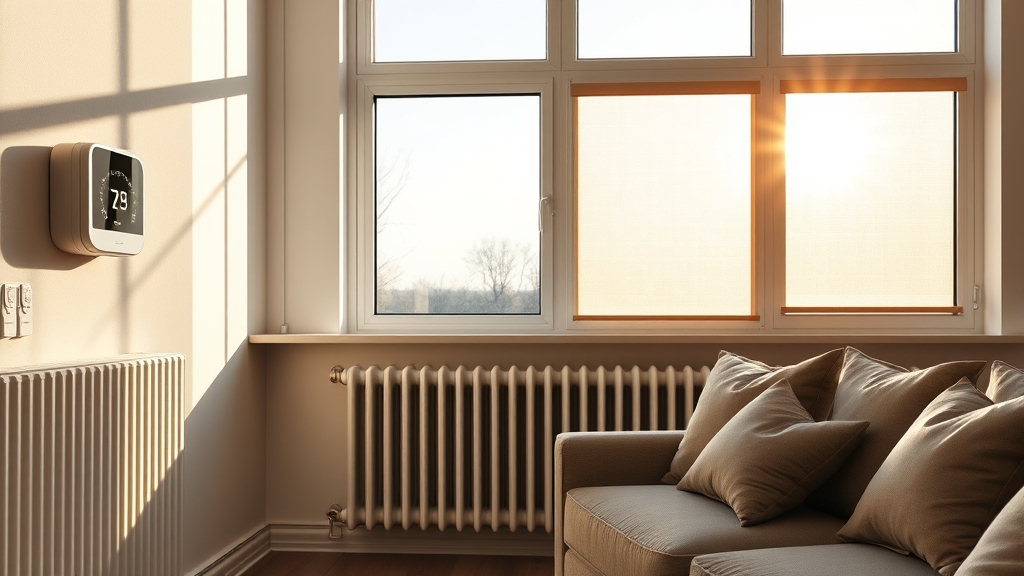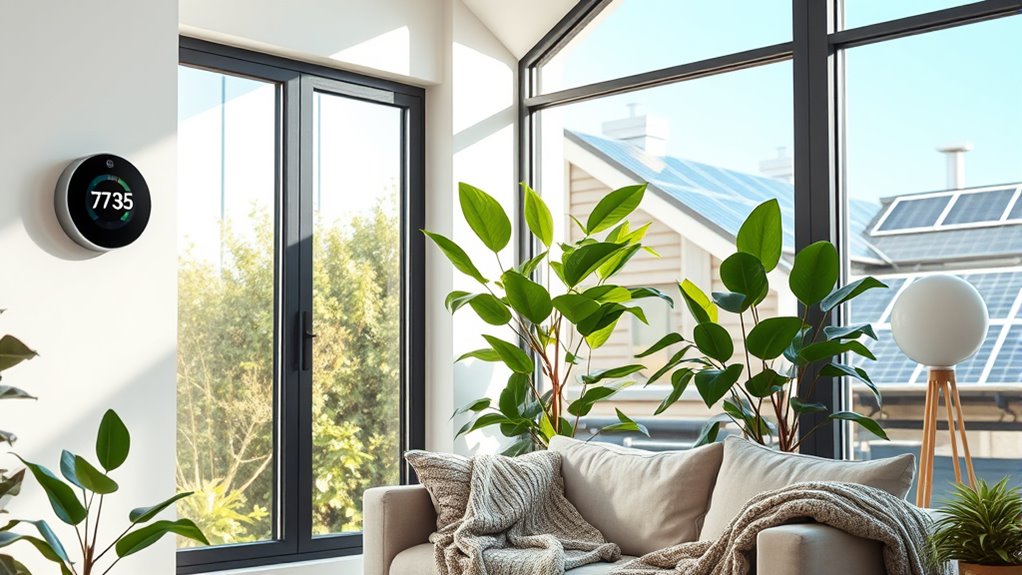To cut your bills and carbon footprint, invest in energy-efficient upgrades like installing solar panels and improving home insulation. Solar power provides clean energy, while insulation keeps your home temperature consistent and reduces energy waste. Combining both upgrades maximizes savings, lowers utility costs, and boosts comfort. Plus, these improvements increase your home’s value and support environmental goals. Keep exploring to discover how these solutions can work best for your home and budget.
Key Takeaways
- Installing solar panels provides renewable energy, reducing reliance on fossil fuels and lowering carbon emissions.
- Improving home insulation minimizes energy waste, resulting in lower heating and cooling bills.
- Combining solar power with enhanced insulation maximizes energy savings and boosts overall home efficiency.
- Regular maintenance of solar systems and sealing leaks prolong efficiency and maintain cost reductions.
- Understanding local incentives and tax credits can offset costs and accelerate financial benefits of energy upgrades.

Making your home more energy-efficient not only helps reduce your utility bills but also minimizes your environmental impact. One of the most effective ways to achieve this is by harnessing solar power. Installing solar panels allows you to generate your own clean energy, decreasing your reliance on fossil fuels and lowering your carbon footprint. Solar power systems have become more affordable and efficient, making them a smart investment for homeowners looking to save money over time. With proper maintenance, solar panels can last for decades, providing a steady stream of renewable energy. Plus, many regions offer incentives or tax credits that can offset installation costs, making this option even more appealing.
Alongside solar power, upgrading your home’s insulation plays a critical role in enhancing energy efficiency. Good insulation keeps warm air inside during winter and blocks heat during summer, reducing the need for constant heating or cooling. This not only cuts down on your energy bills but also makes your living space more comfortable year-round. Focus on insulating key areas such as attics, walls, floors, and duct systems, as these typically allow the most heat transfer. Modern insulation materials, like spray foam or blown-in cellulose, provide better coverage and R-value, ensuring maximum efficiency. Sealing gaps and leaks around windows, doors, and vents complements insulation upgrades, preventing drafts that can undermine your efforts. Additionally, understanding state tax laws related to energy upgrades can help you maximize available financial benefits.
Combining solar power with insulation upgrades creates a thorough approach to energy efficiency. While solar panels work to provide renewable electricity, insulation ensures that the energy you use isn’t wasted. This synergy not only reduces your utility bills but also lessens your home’s overall carbon footprint. As you make these improvements, you’ll notice a more consistent indoor temperature, fewer drafts, and a quieter home. Additionally, these upgrades increase your property’s value and appeal, making your investment worthwhile in the long run.
Frequently Asked Questions
How Do Smart Home Devices Improve Energy Efficiency?
Smart home devices, like smart thermostats and energy monitoring systems, help you improve energy efficiency by giving you more control over your energy use. A smart thermostat learns your schedule and adjusts the temperature accordingly, reducing waste. Energy monitoring helps you track your consumption in real-time, so you can identify areas to save. Together, these devices make it easier to cut bills and lower your carbon footprint.
What Are the Best Energy-Efficient Appliances for Households?
When choosing energy-efficient appliances, look for models with high Energy Star ratings, as they guarantee better performance with less energy use. Regular appliance maintenance guarantees they operate efficiently over time. Consider energy-efficient refrigerators, washing machines, and dishwashers, which save you money on bills and reduce your carbon footprint. Prioritizing these appliances helps you create a more sustainable home while enjoying reliable, cost-effective performance.
How Does Insulation Impact Heating and Cooling Costs?
You might think insulation isn’t worth it, but it considerably impacts your heating and cooling costs. Proper insulation materials reduce thermal bridging, preventing heat from escaping in winter and entering in summer. This keeps your home comfortable and lowers energy bills. Upgrading insulation improves efficiency by minimizing energy loss, saving you money, and reducing your carbon footprint. It’s a smart investment that makes a noticeable difference in everyday energy expenses.
Are Renewable Energy Systems Cost-Effective for Homeowners?
Renewable energy systems can be cost-effective if you consider solar panel savings and wind power viability. While initial costs might seem high, savings on energy bills over time make them worthwhile investments. Solar panels often offer quick returns through reduced electricity costs, and wind power viability depends on your location’s wind resources. Ultimately, these systems can lower your bills and increase your home’s value, making them a smart choice.
What Government Incentives Are Available for Energy-Efficient Upgrades?
Think of government incentives as a guiding lighthouse illuminating your path to savings. You can tap into government grants and tax credits that make upgrades more affordable. These incentives act like a financial wind at your back, helping you reduce upfront costs for energy-efficient appliances, insulation, and solar panels. By taking advantage of these programs, you turn your home into a beacon of sustainability, all while easing your wallet.
Conclusion
Think of your home as a well-tuned orchestra, where every note counts. When you make small changes—insulating, sealing drafts, using efficient appliances—you’re conducting a symphony that saves you money and reduces carbon. Each effort is a musical note, building toward harmony and sustainability. By taking these steps, you become the maestro of your energy future, guiding your household to a brighter, greener tune that benefits both your wallet and the planet.









